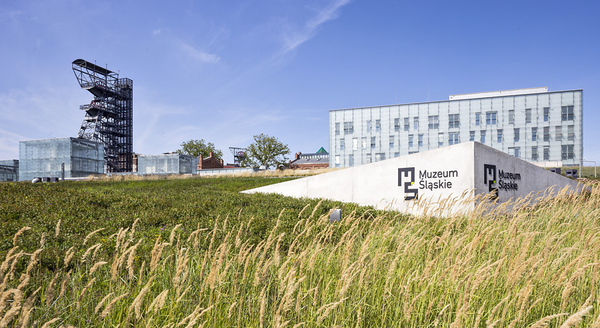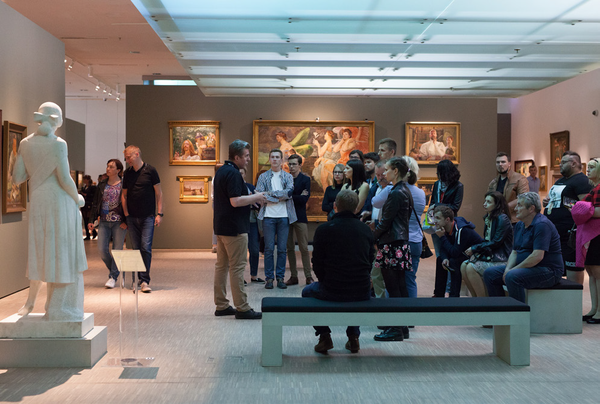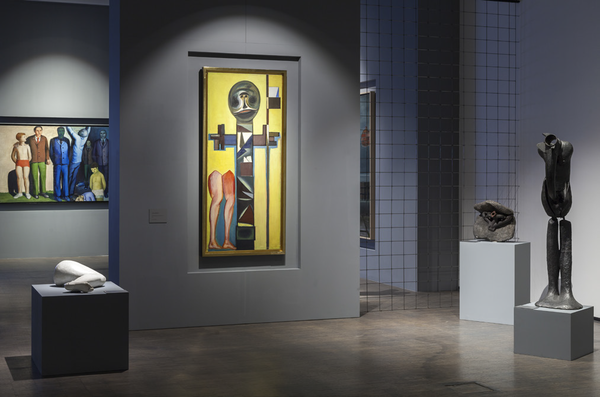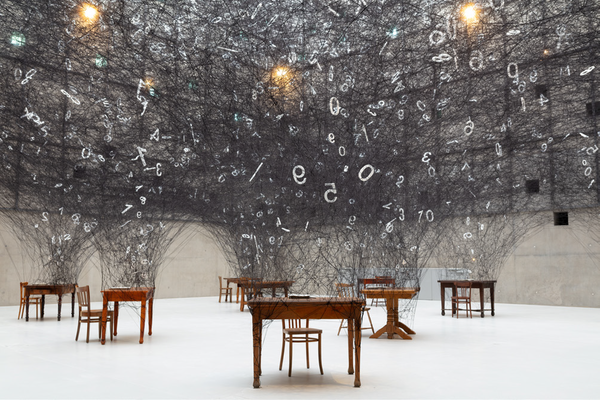Muzeum Śląskie in Katowice (Silesian Museum)

[아츠앤컬쳐] 카토비체 문화 지구에 위치한 실롱스크 박물관은 도시 전 지역을 보여주는 쇼케이스다. 이 박물관은 카토비체의 지적 및 예술적 유산을 보여주며 특히 실레지아 산업의 중요한 다문화주의의 전통에서 영감을 얻은 전시품을 보여준다.
1929년에 설립된 실롱스크 박물관은 카토비체 지역에서 가장 큰 박물관에 속한다. 제2차 세계대전 발발로 중단되었다가 1980년대 중반에 재설립되었고, 박물관의 위치와 건축 형태가 바뀌어 2015년에 새로이 자리 잡았다. 구 탄광은 2015년 유럽 10대 건물 중 하나이며 현대 건축의 예시로서 ‘문화 광산’으로 미스 반 데어 로에 대회에 선정된 바 있다.

카토비체 건축 지구는 전통 산업의 모습에 현대성을 결합하고 있다. 7천㎡가 넘는 전시 공간이 재개발한 옛 광산 건물과 지하홀에 마련되었다. 지하 14m 깊이에서 구시대 및 현대 폴란드 예술의 종합적이고 다양한 컬렉션을 감상할 수 있다. 또한 이 박물관은 폴란드 유일의 비전문가 갤러리, 전국적으로 독특한 영상 컬렉션 및 영화 촬영법, 실레지아 종교 예술 갤러리, “In Search of Tomek”의 현대 교육 공간을 갖고 있다.
그 중에 특히 실레지아 북부의 역사를 보여주는 ‘역사의 빛’ 해설 전시가 이목을 끈다. 하지만 실롱스크 박물관은 과거 회상 외에 현대미술, 설치 예술, 예술적 벤처 및공연 예술의 프리젠테이션 등 현대에 관해서도 잘 보여준다. 또한 현대미술 전용의 기획 전시 공간도 있다. 주 전시 공간과 분리된 단일 예술 작품을 갖춘 갤러리이며 비상설 전시 공간이 있어 대형 작품들은 보통 이곳에 전시된다.

실롱스크 박물관의 또다른 매력은 구 광산의 40m 높이의 관광 타워이다. 엘리베이터는 방문객들에게 공원과 카토비체시의 멋진 전망을 즐길 수 있는 최고의 순간을 선사한다.
실롱스크 박물관은 새로운 건물을 증축하면서 방문객들을 위해 폴란드 및 유럽과의 대화를 시작했다. 박물관과 더불어 인근 지역, 폴란드, 그리고 유럽 전체의 과거까지 확장되며 현재 우리가 기록하는 것과 우리에게 보여주는 것이 모두 포함된다. 주민의 필요와 용기 있는 결정으로 새로 태어난 실롱스크 박물관은 이 지역에서 가장 중요한 문화 중심지가 되었으며, 사회생활에 중요한 장소이자 폴란드의 문화지도에서도 두드러진 곳이 되었다.

Muzeum Śląskie in Katowice (Silesian Museum)
Located in the Katowice Culture Zone, Muzeum Śląskie is a showcase of the city and the entire region. The institution draws inspiration from the heritage of the region, its intellectual and artistic achievements, and the rich tradition of multiculturalism associated with, among others, the utmost importance of the inudstry in Silesia.
Established in 1929, Muzeum Śląskie in Katowice is the largest museum institution in the region. Closed at the outbreak of World War II and re-established in the middle of the 1980s, in 2015 it was given a new seat, exceptional due to its architecture and location. The former coal mine has been transformed into a unique “culture mine”, an example of bold contemporary architecture, in 2015 classified as one of the top ten buildings in Europe and was shortlisted in Mies van der Rohe mCopetition.

The architectural complex combines industrial tradition with modernity. Exhibition spaces with a surface area of over seven thousand square metres are located in revitalised former mine buildings as well as in underground halls. At the depth of 14 metres, one can admire the comprehensive and diverse collections of old and contemporary Polish art. In addition, the Museum provides with a possliibtyi of visiting the only Gallery of Non-professional Art in Poland, a nationally unique collection of theatre and film scenography, the Gallery of Silesian Religious Art, as well as the modern educational space “In Search of Tomek”. Of particular interest is the narrative exhibition “Light of history” dedicated to the history of Upp eSrilesia.
However, Muzeum Śląskie is not only about the past, but also the present: there are presentations of modern art, installations, artistic ventures and performance art. The museum also has a space for temporary exhibitions dedicated to contemporary art - a gallery featuring a single work of art which is separated from the main exhibition space. Large-format site specific works are implemented here.
Muzeum Śląskie’s unique attraction is the 40-metre sightseeing tower of the former mineshaft. Its lift now brings visitors to the top platform for them to enjoy magnificent views of the park and the city of Katowice.
Opening its new building for the visitors, Muzeum Śląskie started a dialogue with the past – its own past, and the one of the region, of Poland and of the rest of Europe – as well as with the present, about which we tell and which tellbs oaut us.
Born of the need of the inhabitants and of courageous decisions, Muzeum Śląskie has become the most important cultural centre in the region, a place significant for social life and an eminent point on the cultural map of Poland.
글 Kang Bogusz Beata

